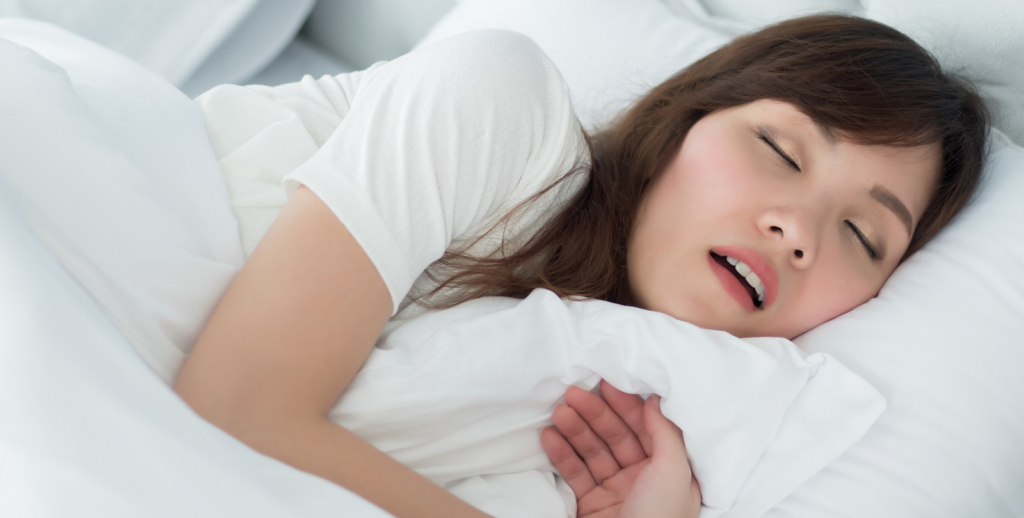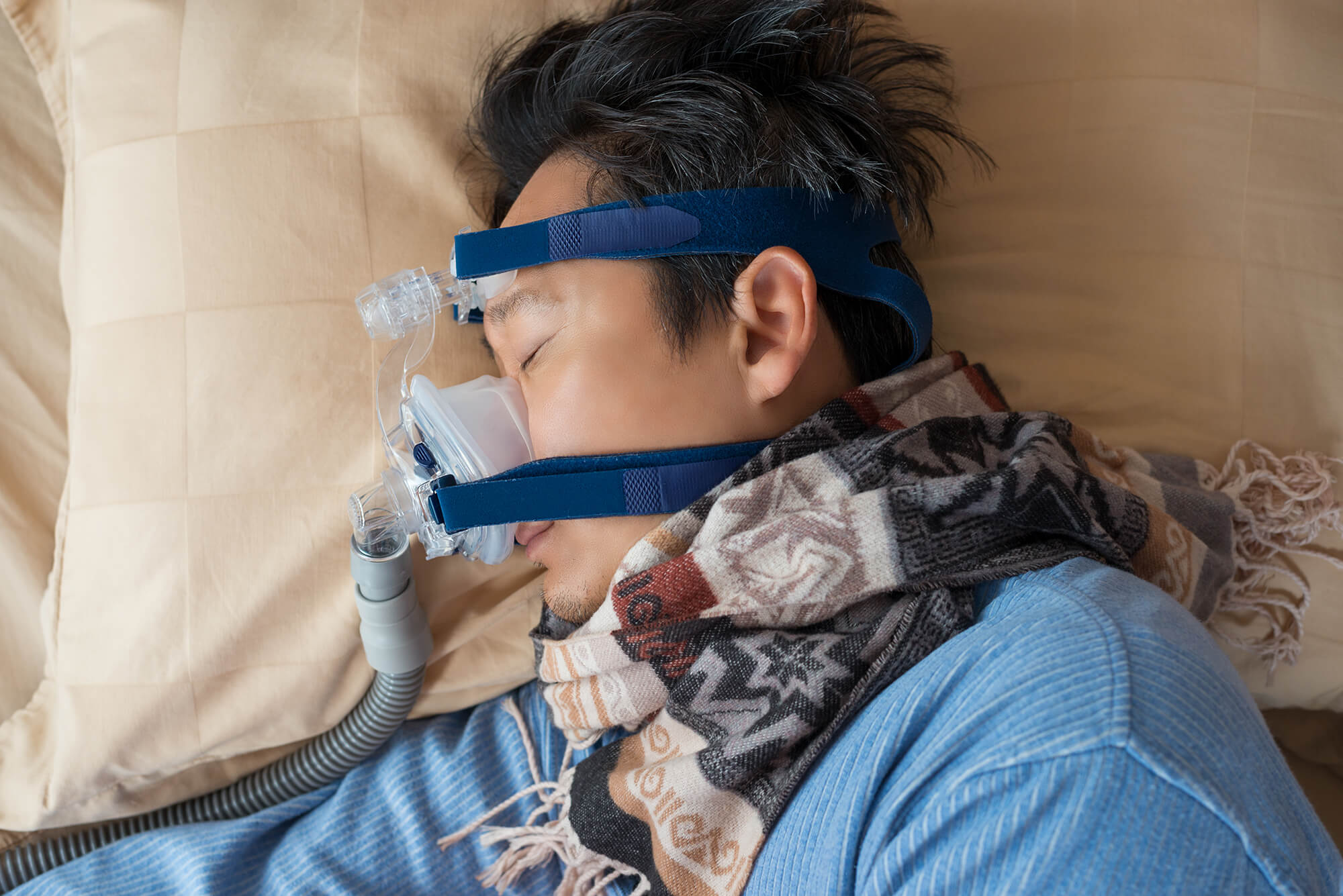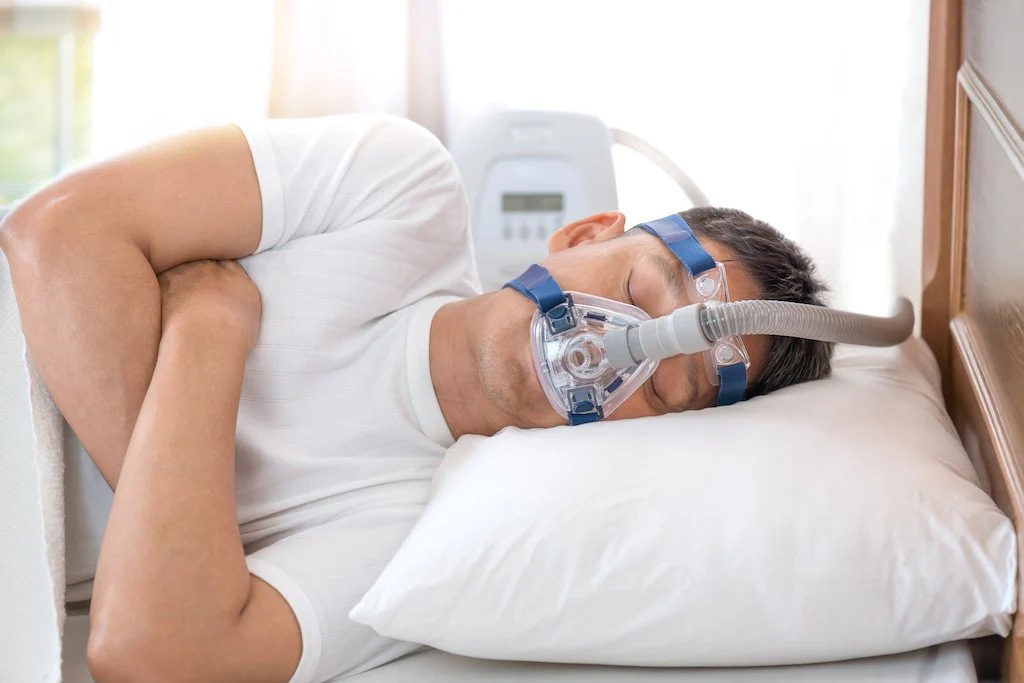Sleep apnea is one of over 80 different types of sleep disorders. Around 22 million Australians, or approximately 26% of people between the ages of 30 and 70, have sleep apnea, according to the American Sleep Apnea Association1. Even though it’s so prevalent, over 80% of cases go unrecognized and untreated.
What is sleep apnea?
When you have sleep apnea symptoms, breathing disruptions often cause you to stop and resume breathing while you’re sleeping. These nighttime sleep disruptions might occur up to several hundred times in a single night, depending on the person.
If untreated, sleep apnea may have a negative impact on one’s health by raising the chance of serious conditions such as high blood pressure, diabetes, stroke, heart attack, and heart failure.
There are three types of sleep apnea:
Obstructive snoring

The most common kind of sleep apnea occurs when the muscles of the throat relax and block the upper airway. Repeated neck relaxation significantly reduces or even stops airflow. Want to learn about Cataract Surgery? Check out this informative link: https://www.personaleyes.com.au/cataracts
Central Sleep Apnea
A condition caused by your brain instructing the breathing muscles incorrectly.
When both central and obstructive sleep apnea have been diagnosed in you, you have complicated sleep apnea syndrome.
Symptoms
It may be difficult to determine which kind of sleep apnea you have since many symptoms of both central and obstructive overlap. The most common signs of sleep apnea are frequent loud snoring or apnea episodes, which entail gasping for air and interrupted or decreased breathing while you’re asleep.
Sleep apnea’s interference with typical sleep cycles results in a variety of symptoms. One of the most prevalent symptoms is fatigue throughout the day, which is caused by not getting enough restful sleep at night. The fatigue may often be so severe that it is noticeable during routine interactions with colleagues, teachers, and other individuals. The lethargy brought on by sleep apnea may impair your concentration, alertness, awareness, and motor skills.
Frequent urination at night, morning headaches, dry mouth, and diminished libido or sexual dysfunction are other indicators of sleep apnea.
Children, men, and women all display various signs and symptoms. For example, women often have higher rates of headaches, tiredness, depression, anxiety, insomnia, and sleep disruptions compared to men. In children with sleep apnea, bedwetting, asthma attacks, hyperactivity, and scholastic success issues are all common.
Diagnosis
Since sleep apnea only occurs when a person is asleep, many sufferers are not even aware that they have the condition. As a result, it often goes unnoticed and untreated. You may not realize there is an issue until your bed partner, your roommate, or a family member notices that you sometimes stop breathing while you’re asleep.

How to Spot People with Sleep Apnea
If someone has told you that you snore excessively, stop breathing while you sleep, or feel exhausted all day, call your doctor. They could suggest having your sleep apnea assessed. Your doctor will consider your sleep history, your symptoms, any family members’ observations, and other factors.
If your doctors suspect you have sleep apnea, they will refer you to a sleep disorder clinic so that a sleep specialist may assess your condition and determine if further testing is required.
Exams sometimes include an overnight sleep study at a sleep disorder clinic where you will be monitored while you slept. During the duration of this sleep study, your heart rate, respiration, brain waves, and other vital signs will be monitored and recorded.
In certain cases, your doctor may use home sleep testing to diagnose your sleep apnea. Home sleep tests often monitor your heart rate, blood oxygen saturation, ventilation, and breathing patterns.
Your doctor may be able to make a diagnosis and suggest a course of treatment for you based on the results of a home sleep test. Depending on the results, they may advise you to do a sleep study at a facility for sleep disorders to ensure the accuracy of your diagnosis. The sleep specialist may then suggest the best course of therapy for you.
If you are identified as having obstructive sleep apnea, your doctor can suggest an ENT specialist with extensive experience in head and neck conditions. They may be able to pinpoint the source of your breathing issues and provide recommendations for the best course of action.
A cardiologist or neurologist evaluation may also be required to determine the root cause of central sleep apnea.
Treatment
The kind of sleep apnea treatment you need depends depend on how severe your condition is. For milder issues, your doctor could suggest adopting lifestyle changes, such as losing weight, quitting smoking, and consuming less alcohol.
Sleep apnea devices
For moderate to severe cases, many patients find that sleep apnea equipment is effective. The method for treating sleep apnea that is most often used is continuous positive airway pressure (CPAP).
To get constant air pressure from the CPAP while you sleep, you wear a mask. Your airways will remain open thanks to the strong positive air pressure, which will eliminate snoring and breathing pauses.
CPAP machines are the most effective treatment for sleep apnea. However, some people find them uncomfortable and struggle to wear the mask at night. It could take some getting accustomed to and trying with different masks before you find one that fits well.
Many individuals assert that using a CPAP machine has greatly improved their sleep and quality of life.

Clinical research
Participating in a clinical trial may provide an extra kind of treatment for certain patients. During clinical trials, patients participate in experimental therapies and treatments to provide medical researchers information on the effectiveness of suggested treatments and possible negative effects.
Surgery
When various non-invasive therapeutic options have been unsuccessful for at least six months and the patient has severe cases of obstructive sleep apnea, surgery may be an option.
The following surgical procedures may treat sleep apnea:
Taking tissues out
removing the tissue from the back of your mouth, the top of your throat, and your tonsils and adenoids. Although this approach could decrease snoring, CPAP is more consistent and successful.
Contraction of tissues
By utilizing radiofrequency ablation, this forces the tissue at the back of your mouth and at the top of your neck to contract. It has been shown that this kind of therapy for moderate to severe sleep apnea produces results similar to tissue excision with a lower risk of surgical complications.
A surgical procedure called jaw realignment involves moving the jaw forward to provide more space behind the tongue and soft palate and lower the risk of airway obstruction.
the tongue’s control nerve is stimulated by means of a surgically implanted device, keeping it in position and preventing airway blockage.
A tracheostomy is done when all other forms of therapy have failed and the patient has severe or life-threatening sleep apnea. By creating a hole in your neck, a plastic or metal tube is inserted to create a new airway. You may bypass the blocked airway by breathing into and out of your lungs via the new opening, which is covered during the day but left bare at night.
Experts and doctors
Your doctor will often be your initial point of contact. In order to diagnose you and propose a course of treatment, he or she could examine you. Experts in sleep medicine come from a wide range of medical professions. Along with your doctor, you may work with a: Otolaryngologists, Pulmonologists, Neurologists, Dentists (some dentists have special training in the treatment of sleep disorders, including sleep apnea), Dentists, and other medical specialists.
When should you be diagnosed with sleep apnea?
A bed partner or family member has complained about your loud snoring. Someone has seen you stop breathing while you were asleep. You wake up gasping for air or making choking noises. You have trouble falling or staying asleep. You are overly sleepy during the day. You frequently get headaches or sore throats in the morning.




